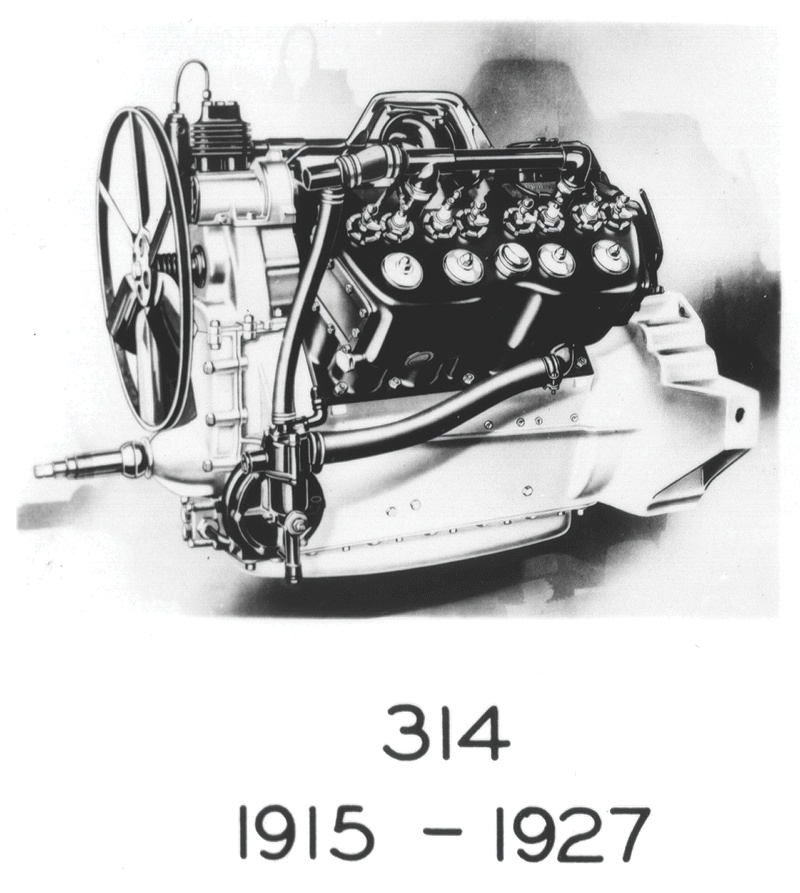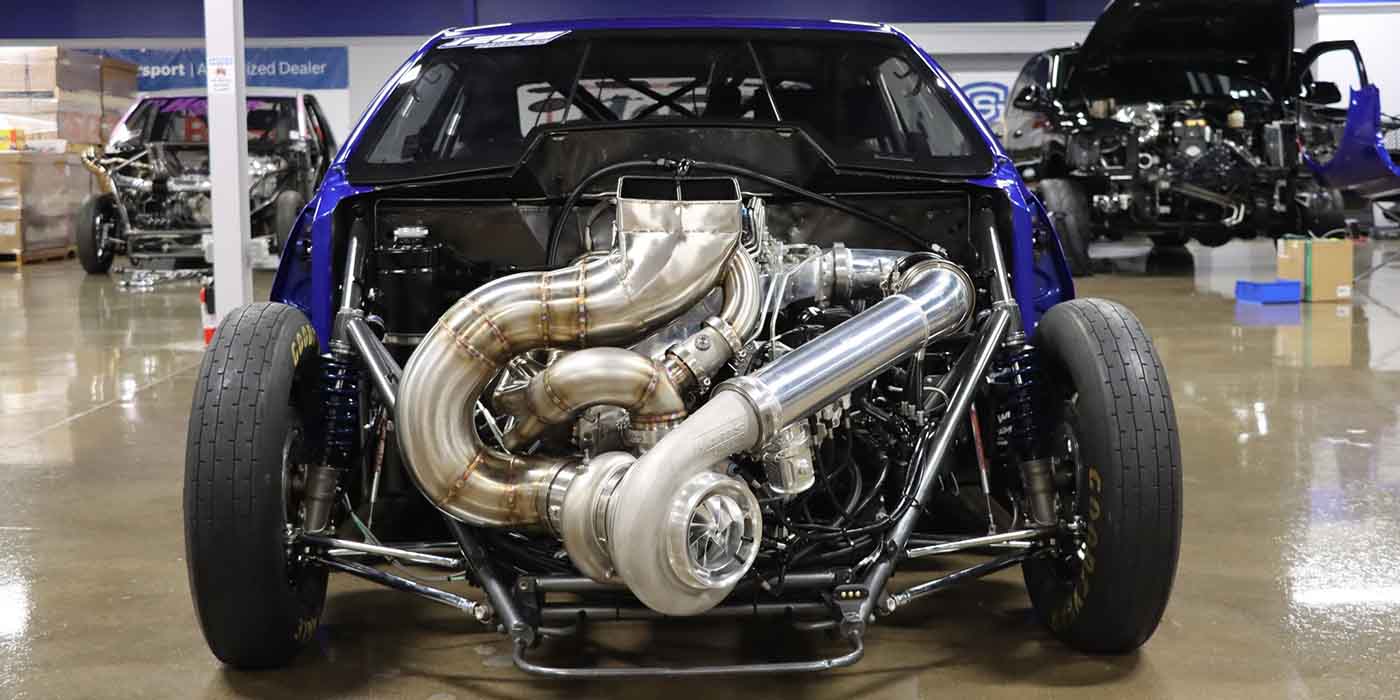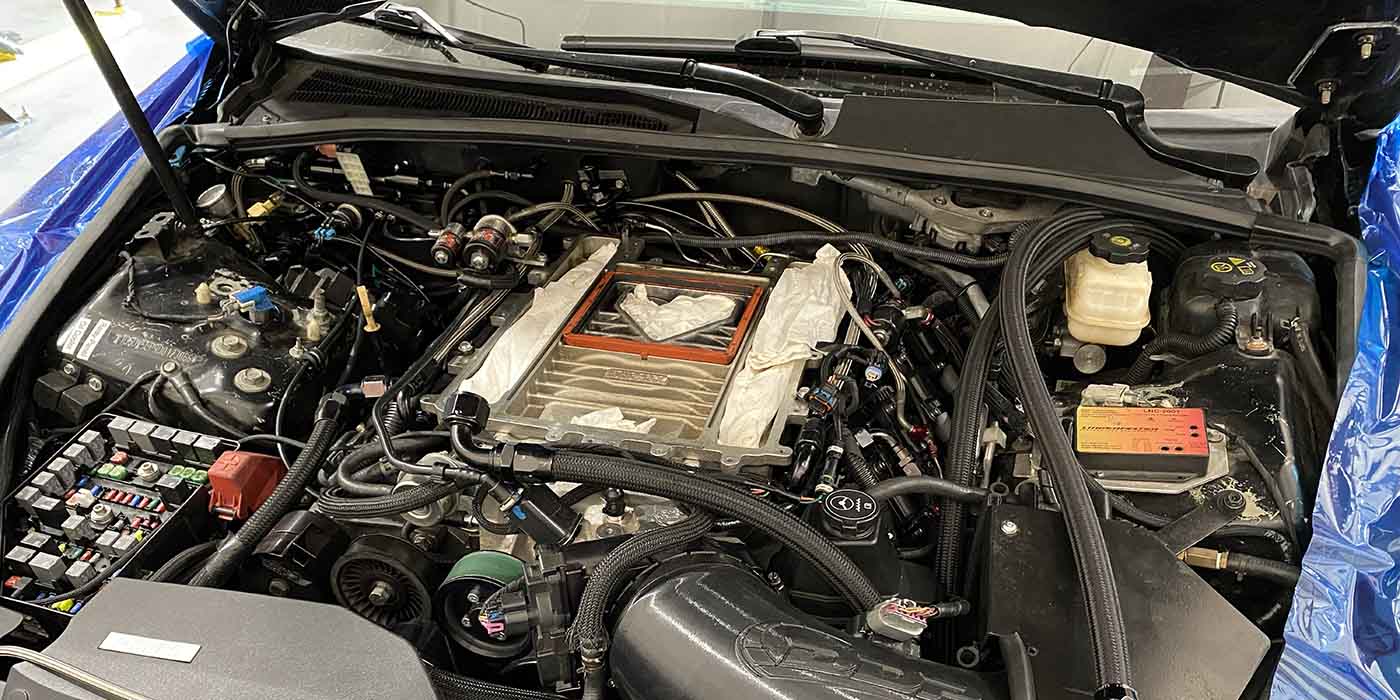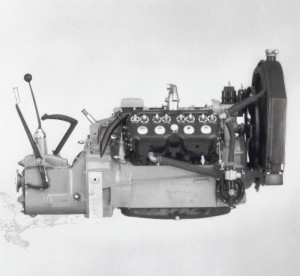
The 314.5-cid V8 was developed 100 years ago in 1914 and had three main bearings. It was first used in a car in the 1915 Cadillac Model 51.
For more than a century, the name Cadillac has been synonymous with performance, style and passion. And in those early years of the Cadillac Automobile Company, it was a former loom mechanic – Henry Martyn Leland – who was credited with forging the technologies that separated Cadillac from the other automobile businesses that were springing up at the turn of the 20th Century.
Leland was born to Quaker parents in Vermont in 1843, and 43 years later in 1890, Leland took his family and his talents to Detroit, MI to seek his fortune in the growing automotive industry.
In June 1901, Olds Motor Works signed a contract for Leland to make Curved Dash Olds engines. Leland designed one that developed 23% more horsepower than an engine developed at that time by the Dodge Brothers — John and Horace. Unfortunately, Olds rejected the Leland designed engine due to retooling costs. A year later, Henry Ford took his design.
In August 1902, two of Ford’s backers called Leland in to appraise the automobile factory so they could sell out. They felt Ford was too involved in building racing cars. Leland showed them the engine that Olds had rejected and suggested they stay in.
They completed the first Cadillac on Oct. 17, 1902.
The single-cylinder Cadillac would be built for half a dozen years. The first four-cylinder Cadillac arrived in 1905. The Model 30 of 1909 had a refined four that would advertise “1/1000th of an inch is the standard measurement.”
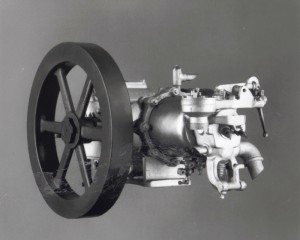
Mass Production
General Motors then bought Cadillac for over $5.5 million. In September 1914, Cadillac introduced the first V8 engine in a series produced, mass-market automobile.
The 3-main-bearings 314.5-cid V8 had a 3-1/8 x 5-1/8 in. bore and stroke.
It was a 90-degree L-head with non-detachable heads and two cast iron four-cylinder blocks on an aluminum crankcase. With a 4.25:1 compression ratio, it made 70 hp at 2400 rpm and 180 lbs.-ft. at 1800-2200 rpm.
The engine had rockers with roller cam followers, a 1.5 gallon crankcase and a 5.25-gallon cooling system. Its Johnson float feed carburetor had auxiliary air control. The water jackets and combustion chambers were integral with the blocks.
Coolant circulation and temperature control relied on an impeller pump with a thermostat for each block.
Three 1-7/8 in. bearings protected a crankshaft with four throws in one plane. The fork-and-blade connecting rods were a Leland trademark.
Rod bearings were made available in standard, .005 under and .020 under. Three rings were wrapped around the pistons and came in standard, first and second oversize.
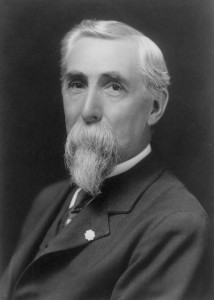
A single camshaft with eight cams was used. A silent chain drove the camshaft and generator shaft. The generator and distributor were rear mounted since a two-cylinder power tire pump was up front.
The updraft carburetor had a water-heated intake manifold. The dual exhaust system (without balance pipe) had log-type exhaust manifolds.
Cadillac used 1-9/16-in. diameter, 5/16-in. lift flat exhaust valves flat and tulip-shaped intake valves actuated by adjustable tappets connected to rocker arms with the roller riding on cams.
Cadillac’s firing order was 1L-2R-3L-1R-4L-3R-2L-4R as viewed from the rear and each bank was numbered one through four from the front.
The valve chamber caps were stamped H, L, or LL for high or low compression ratios. A three-point suspension kept the engine smooth for the era.
The mounts were of ball-and-socket design at the front and solid at the rear.
Lubrication Challenges
On early engines, the oil relief valve was cast integral with the starter gear housing. Later, the oil relief valve was a separate unit mounted on the angular face of the crankcase.
The lubrication system was recirculating and pressure fed from a gear-type oil pump. The pump drew in oil from the crankcase and forced it through a header pipe running inside the crankcase.
Leads ran from this header pipe to the main bearings and then through drilled holes in the crankshaft to the connecting rod bearings.
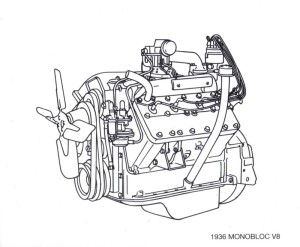
The pistons, cylinders and all were lubricated by oil slung up from the lower ends of the connecting rods. Oil from the rear end of the header pipe ran to the pressure relief valve.
Then, the overflow from this valve was gravity fed to the camshaft and chains, before draining to the crankcase.
In 1916, Cadillac offered only one series, the V8-powered Type 53. Erwin G. “Cannonball” Baker and Wm. F. Sturm drove a V8 roadster from Los Angeles to New York in seven days, 11 hours, 52 minutes. They bettered their previous time in another car by three days, 19 hours, 23 minutes.
Continuing refinements of the V8 had brought detachable cylinder heads for 1918, an inherently balanced crankshaft in the V-63 of 1924 and detail changes in the interim 85.5-hp Series 314 V8 that endured until 1936. Then, Cadillac came out with a new Gen III V8 that introduced unit-block construction and downdraft carburetion in a design that would survive until 1949.
The 1936 V8 came in two displacements. Both were L-heads with the cast iron block cast with the crankcase. Series 60 Cadillac buyers got a 322-cid version that had a 3-3/8 x 4-1/2-in. bore and stroke and a 6.25:1 compression ratio. This produced 125-hp at 3400 rpm and 155 lbs.-ft. at 1000 rpm.
The engine had three main bearings, hydraulic valve lifters and a Stromberg EE-25 dual downdraft carburetor. Its crankcase capacity was 7 qts. And the cooling system held 30 qts. of coolant.
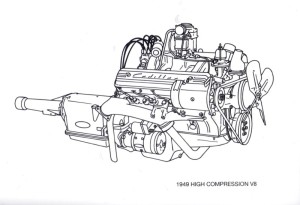
In this engine the water jacket ran the full length of the cylinder bore and a more rigid crankshaft with six counterweights was used.
Cadillac used new connecting rods with the large ends split at an angle. This allowed them to be removed through the top of the engine. Hydraulic valve silencers were used, along with new manifolding and a downdraft carburetor.
Suction-type crankcase ventilation was employed to take fumes out of the engine through the exhaust system. The lubrication system was simplified by restricting piping only to the hydraulic lifters. A combination fuel pump and vacuum pump was mounted on the front engine cover.
The starter was on the right side, in front of the bell housing. The generator could be serviced by removing an access panel under the left front fender. The radiator was pressurized.
In its pricier Series 70/75 models Cadillac went to a 346-cid V8 based on the 322-cid version. It had a 3-1/2 in. bore, 135 hp at 3400 rpm and 170 lbs.-ft. at 1000 rpm. Cadillac kept the 346-cid V8 until 1949, when a compact, but very sturdy, overhead valve V8 with five main-bearings arrived.
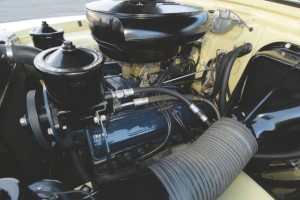
It would last 30 years without getting stale, but growing more monstrous in size and power as time rolled on. The original had a 3-13/16 x 3-5/8 in. bore and stroke and displaced 331 cu. in. With a 7.5:1 compression ratio it made 160 hp at 3800 rpm and 312 lbs.-ft. at 1800 rpm. It had hydraulic valve lifters, a 5 qt. (or 6 qt. with filter) sump and an 18-qt. coolant capacity: A Carter WCD two-barrel carburetor fed it.
This “Cad V8” started—and participated in—the postwar horsepower race. By 1952, it had a four-barrel carburetor and cranked out 180 hp. Thirty ponies were added in 1953, with 20 more piled on the next season. By 1955, the 331 V8 had a 9.0:1 compression ratio, 250 hp. A dual four-barrel carburetor 270-hp version was standard for Eldorados and optional on other models for $161 extra.
A 1956 bore increase to 4.00 in. meant 365 cu. in. With a 9.75:1 compression ratio 285 hp was on tap. The dual-carb Eldorado V8 was good for 305 hp. For 1958, the Eldorado came with three two-barrel carburetors and 335 hp. Compression was up to 10.5:1 for Cadillac’s 1959-1960 “finmobiles” which had a longer stroke, 390 cu. in., 325 base hp and 345 hp in tri-carb Eldorados.
During the late ‘50s a recession moved car buyers towards compact imported cars with fuel-efficient four-cylinder engines. With lead times being what they were then, Detroit reacted slowly to this change and, by the time it had, the pendulum swung back again. At Cadillac, the only engine available in 1961-1963 was the 390 with a single four-barrel carburetor and 325 hp at 4800 rpm.
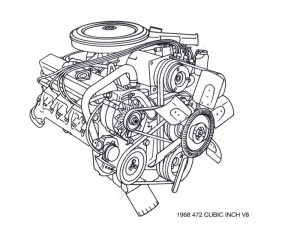
In 1964, what was basically the ’49 V8, was bored (4.13 in.) and stroked (4.00 in.) to 429 cu. in. Cadillac advertised 340 hp at 4600 rpm and 480 lbs.-ft. of torque at 3000 rpm. This was a large engine, but had a high power-to-weight ratio. It was used in the front-wheel-drive Eldorado (with dual exhausts). In 1968, the bore and stroke went to 4.30 x 4.06 in. for 472 cid and 375 hp
To keep a watchdog government happy, in the ‘70s Cadillac adopted a 8.5:1 compression ratio to permit utilization of low-lead or lead-free gasoline. A high-energy electronic ignition system debuted in 1974, Sales plunged due to an Arab nations’ oil embargo. In mid-1975, Cadillac launched the international-sized Seville with a 350-cid fuel-injected V8, while full-size models got electronic fuel-injection for a 500-cid engine that was the biggest V8 of modern times. In 1977, the full-size models were downsized. All non-Seville Cadillacs carried a new, smaller, 425-cid V8. In 1978, Sevilles could be ordered an Olds diesel V8. The Eldorado was downsized for 1979 and used a 350-cid V8. Big Cadillacs kept the 425-cid V8 and all models could be optioned with the Olds diesel.
A new 1980 Seville had front-wheel drive and a standard diesel engine.
Other Cadillacs turned to a 368-cid gas V8. A fuel-injected version was standard on Eldorados and optional for Sevilles. Late in the year came some shocking power plant news—a Buick-built V6 for Cadillacs.
A different kind of “V8” arriving in 1981 would bring Cadillac nothing but grief. The variable displacement (V-8-6-4) engine seemed like a good idea at the time, but it was trouble and lasted only one year, except in limos. The Buick V6 remained an alternative.
For 1982, Cadillac launched its four-cylinder subcompact the Cimarron. A new aluminum-block 249-cid 4100 V8 replaced the troublesome V-8-6-4 as the standard engine in other models.
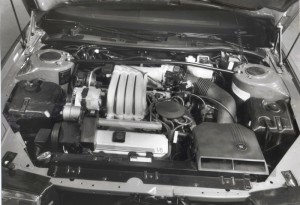
The 1985 deVille and Fleetwood models were two feet shorter and used transverse mounted V6s or V8s. Even Fleetwood limos were front-drives, but the Brougham soldiered on with rear-wheel drive. Brand-new Eldorados and Sevilles arrived for 1986 and limousines finally dropped the V-8-6-4 engine. Rear-drive Fleetwood Broughams kept the 5.0-liter V8.
Cadillac’s introduction of the Allanté in 1987 highlighted what was called the “New Spirit of Cadillac.” The Allanté was based upon the GM-30 platform and utilized a 4.1-liter (249-cid) 170-hp V8.
Cadillac’s best-selling Sedan deVille model and both deVille models used a 130-hp version of the 4.1. A 5.0-liter (307-cid) V8 with 140 hp and 346 lbs.-ft. was standard in Broughams and optional in Cadillacs.
With the elimination of the Cimarron in 1989, Cadillac returned to its traditional position of offering automobiles powered exclusively by V8 engines.
By this time, Cadillac was marking its 75th year of offering V8s. Among the highlights for 1990 was a 4.5L V8 with a 25-hp increase to 180 for Eldorado, Seville, deVille and Fleetwood models, and an optional 5.7L V8 for the Brougham. The Allante’s 4.5 developed 200 hp. Some Cadillacs built for coachbuilders or for towing used a 5.7L (350-cid) Chevrolet-built V8.
Cadillac observed its 90th Anniversary in 1993 in a big way, introducing the pioneering Northstar engine, with limp-home capability. This was a 4.6L (279-cid) aluminum block and heads, overhead valve V8 with dual overhead cams with a 10.3:1 compression ratio, direct acting hydraulic tappets and a tuned port induction system.
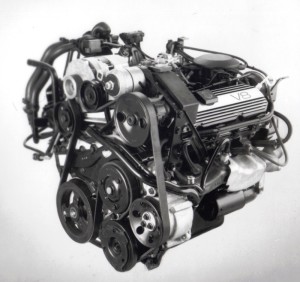
It was rated 270 hp/300 lbs.-ft in Eldorado Sport Coupes with the Sport Performance package and 295 hp/290 lbs.-ft in the Eldorado Touring Coupe, Seville Touring sedan and Allante. The aluminum block used cast iron liners. The deVille, Sixty Special, Seville and Eldorado came standard with a 4.9L (300-cid) 200-hp Cadillac V8 and the Fleetwood used a 185-hp Chevy 350.
The Northstar engine of 1995, powering all Cadillacs except the Sedan deVille and Fleetwood, helped to mark the 80th Anniversary of the Cadillac V8.
The V6 Catera zipped into the linep in 1996 as a 1997 model. It was the first time Cadillac offered a Cadillac-built engine other than a V8 since 1988. All other Cadillacs used Northstar V8s, which came in 275- and 300-hp versions.
Cadillac’s millennium-ending 2000 lineup featured completely restyled full-size deVille sedans built on a much stiffer platform shared with some other GM marques. Eldorado and Seville remained largely unchanged in appearance, but received tweaks to their Northstar V8s.
The 4.6L 275-hp Northstar was used in the Seville SLS thru 2004, the Eldorado ESC thru 2002 and the deVille and deVille DHS thru 2005. The 300-hp version was used in the Seville STS until 2004, the Eldorado ETC thru 2002 and the Deville DTS until 2005. Its final appearance was in the last 2006-2011 DTS series.
The 4.4L Northstar V8 used in Cadillac’s later V-Series were all supercharged. The present STS-V engine produces 469 hp and 439 lbs-ft. The 2006-2008 XLR-V uses the same supercharged Northstar V8 as the STS-V, but in a 443-hp 414 lbs-ft. version with the supercharger and four intercoolers built into the intake to fit under the lower hood. And lest we forget, Cadillac Escalade SUVs were powered by the Chevy-built Vortec 5700 V8, 6.0L Gen III series V8 or Gen IV 6.2L V8. In addition, the CTS-V sports car offered a variety of Corvette V8s including Z06 and ZR1 performance mills with as
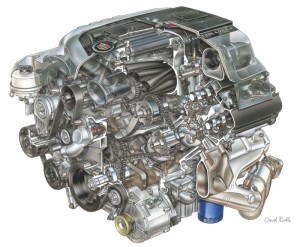
much as 638 hp.

